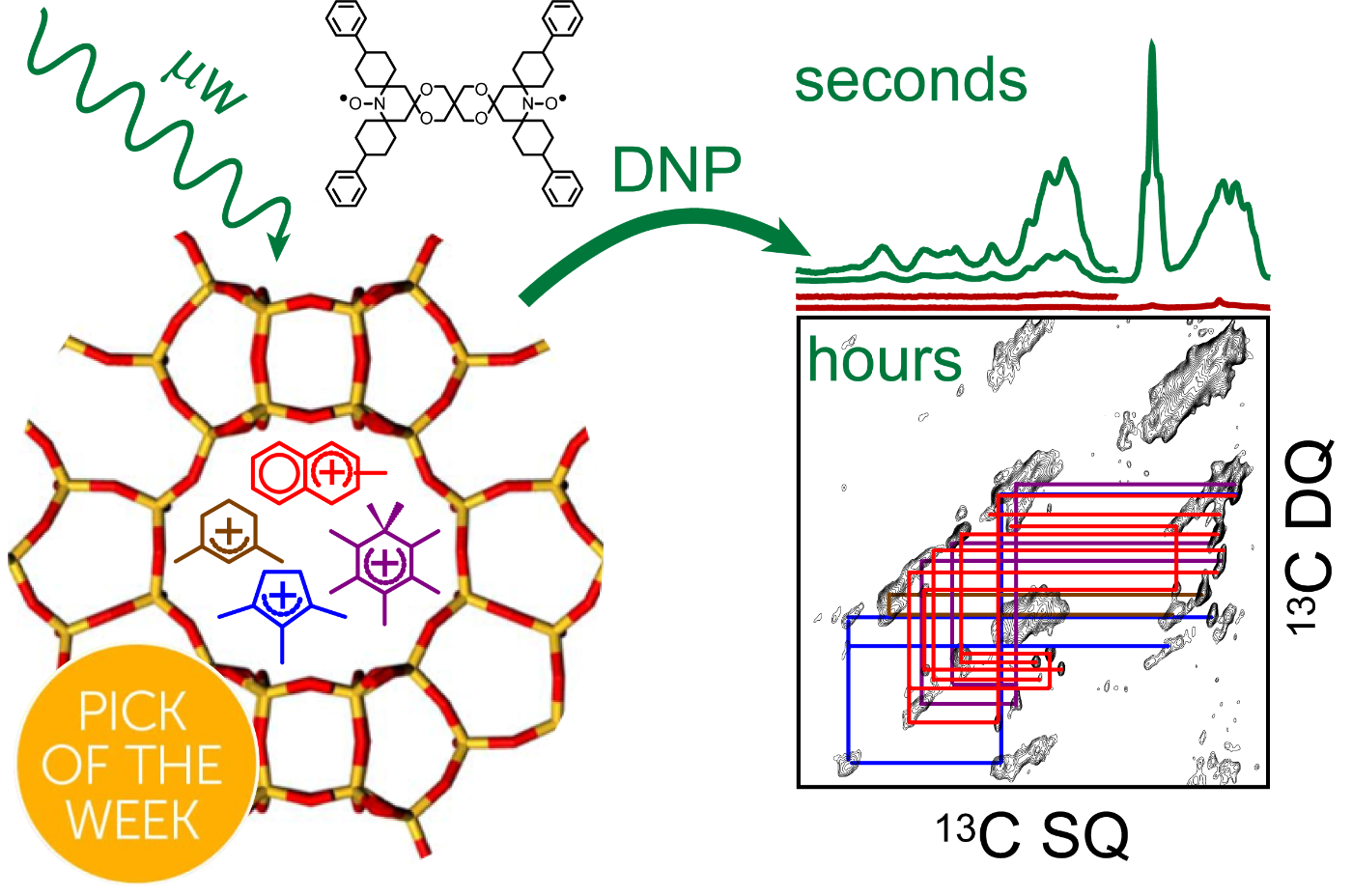Recently, the team led by Prof. Bao Xinhe from the State Key Laboratory of Catalysis (SKLC) of the Dalian Institute of Chemical Physics (DICP) made a way to detect carbocations on zeolites using an efficient technique — dynamic nuclear polarization enhanced solid-state NMR. This work has been published inChemical Scienceentitled “Fast detection and structural identification of carbocations on zeolites by dynamic nuclear polarization enhanced solid-state NMR”(Chem. Sci. DOI:10.1039/C8SC03848A). This article is listed in the part of the themed collections:2018 Chemical Science HOT Article Collectionand2018 ChemSci Pick of the Week Collection.

Acidic zeolites are porous aluminosilicates used in a wide range of industrial processes such as adsorption and catalysis. The formation of carbocation intermediates plays a key role in reactivity, selectivity and deactivation in heterogeneous catalytic processes. However, the observation and determination of carbocations remain a significant challenge in heterogeneous catalysis due to the lack of selective techniques of sufficient sensitivity to detect their low concentrations.
Here, the authors combine13C isotopic enrichment and efficient dynamic nuclear polarization magic angle spinning nuclear magnetic resonance spectroscopy to detect carbocations in zeolites. They use two dimensional13C–13C through-bond correlations to establish their structures and29Si–13C through-space experiments to quantitatively probe the interaction between multiple surface sites of the zeolites and the confined hydrocarbon pool species. They show that a range of various membered ring carbocations are intermediates in the methanol to hydrocarbons reaction catalysed by different microstructural β-zeolites and highlight that different reaction routes for the formation of both targeted hydrocarbon products and coke exist. These species have strong van der Waals interaction with the zeolite framework demonstrating that their accumulation in the channels of the zeolites leads to deactivation.
These results enable understanding of deactivation pathways and open up opportunities for the design of catalysts with improved performances.
(Text by Li Fan)